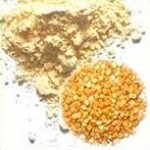HOW TO PREVENT AND CONTROL DIABETES
November 14, 2013 by admin
Filed under Tips for Ayurveda
 World Diabetes day is observed on November 14 of each year all over the world. It was introduced in 1991 by the International Diabetes Federation and World Health Organization in response to the alarming rise of diabetes all over the world.
World Diabetes day is observed on November 14 of each year all over the world. It was introduced in 1991 by the International Diabetes Federation and World Health Organization in response to the alarming rise of diabetes all over the world.
Each year, World Diabetes day is centred on a particular theme related to Diabetes. Earlier topics have included diabetes and human rights, diabetes and lifestyle, diabetes and obesity, diabetes in the disadvantaged and the vulnerable, diabetes in children and adolescents.
For 2009-2013 the theme chosen is Diabetes Education and Prevention.
Let us understand what is Diabetes – prevention and control methods.
Diabetes is called Prameha in Ayurveda. The description and details of the disease and its treatment can be found in Atharva Veda, which originated between 3000 BC to 1500 BC. More urine than the actual intake of water is mentioned as the simplest sign of diabetes in Ayurveda.
Symptoms associated:
Individuals can experience different signs and symptoms of diabetes, and sometimes there may be no signs. Some of the signs commonly experienced include: frequent urination, excessive thirst, increased hunger, weight loss, tiredness, lack of interest and concentration, a tingling sensation or numbness in the hands or feet, blurred vision, frequent infections and boils, slow-healing wounds, vomiting and stomach pain.
People who lead a luxurious life with less physical work are prone to diabetes more than others. People with huge personalities are having a higher chance of being diabetic. Diabetic comes with stress, imbalanced diet and lifestyle.
Diabetes often runs in families. If one of your parents has diabetes, your chances of getting it immediately become significantly higher. You need to approach this situation consciously and prevent from occurring.
Ayurvedic practitioners have a multi-pronged approach to diabetes. Ayurveda, too, recommends lifestyle remedies that include limit to food that are high in sugar and simple carbohydrates, eating smaller portions through the day, eating a variety of whole-grain foods, complex carbohydrates and vegetables every day, less fat and using less salt. It is also important to avoid smoking, reduce intake of alcohol, sleep adequately, check blood sugar levels periodically, check weight periodically and maintain ideal body weight.
Control measures:
In Ayurveda, the concept is that mind and body are interdependent and inseparable. So diabetic patients should always try to be calm and cool. The mind should be set in a free and easygoing manner. It is always better to keep cigarette smoking and alcohol at a distance. If a person is addicted to alcohol and is not in a position to avoid it, then consume only brandy, whisky and rum, and avoid beer and sweet wine. Diabetic persons should strictly avoid alcohol on an empty stomach.
Based on your medical practitioners input plan for medicine intake. Intake of medicine will have an effect only when supported by a balanced diet. According to the calorie content, food items can be classified in to five categories.
- Pulses (grains)
- Meat, fish, nuts, ghee and oils
- Milk and milk products
- Fruits
- Vegetables
Each category is similar to one another in the quantity of calories contained. You can include any category in the diet. But frequency of food consumption is to be arranged in such a manner by taking in to account the patient’s age, lifestyle and nature of work.
Care should be taken to avoid glucose, sugar, cake, pudding, chocolate and sweets, potatoes, tapioca and fried foods are also not good. Diabetic patients must try to control their weight in proportion to their height and age.
The appetite of a diabetic patient is high and they tend to become impatient and angry. Actually it is not appetite but thirst.
- Onions, tomatoes, cucumbers and carrots can be consumed in the form of soup or salad
- Consume fresh fruits like oranges and lemons. Avoid fruit juices.
- Include almonds in your daily schedule.
- Avoid dry fruits such as raisins(dry grapes), figs as fruit sugar is concentrated.
- Lemon tea, black coffee without sugar can be used
- Lemon juice without adding sugar , tender coconut water are suitable
- Avoid white flour.
- Include sprouted beans i.e moong gram and chick pea as these are proteins.
Exercise:
Daily exercise is necessary to manage diabetes. Yoga is beneficial. Ayurveda books refers reducing diabetic complaints by walking miles and miles without using foot wears. Walking is the least form of exercise prescribed. Walking distance is to be adjusted taking ones age and physical condition into consideration.
 Early morning and evenings are the most suitable times for walking. Diabetic person should walk regularly and be active. Ideally it is better to walk in groups as you will not skip the session due to laziness and secondly it is safe to be among a group. The walk should follow the schedule of low speed for first 5 minutes. A warm up basically. Slowly increase the speed and continue it for 30 minutes , then the last 10 minutes should again be in a relaxed mode. Keep your shoulders straight and hands free while walking. For those preferring an evening walk, leave a gap of 2 to 3 hrs after food intake.
Early morning and evenings are the most suitable times for walking. Diabetic person should walk regularly and be active. Ideally it is better to walk in groups as you will not skip the session due to laziness and secondly it is safe to be among a group. The walk should follow the schedule of low speed for first 5 minutes. A warm up basically. Slowly increase the speed and continue it for 30 minutes , then the last 10 minutes should again be in a relaxed mode. Keep your shoulders straight and hands free while walking. For those preferring an evening walk, leave a gap of 2 to 3 hrs after food intake.
To summarize, food and lifestyle, in addition to the prescribed medicine , can to a large extent control and cure diabetes.
Go thru’ this article on the Recommendations to prevent diabetes naturally. Let’s share this message of awareness to our friends too.
TIPS TO PREVENT BAD BREATH
June 7, 2013 by admin
Filed under Tips for Ayurveda
 Bad breath is an embarrassing problem. Sometimes the person suffering from bad breath does not realize this. People avoid conversations with individuals having bad breath. Bad breath is also known as Halitosis. There are many reasons for Bad breath. You need to understand the causes and prevent bad breath for short term duration and long term benefits too.
Bad breath is an embarrassing problem. Sometimes the person suffering from bad breath does not realize this. People avoid conversations with individuals having bad breath. Bad breath is also known as Halitosis. There are many reasons for Bad breath. You need to understand the causes and prevent bad breath for short term duration and long term benefits too.
Human mouth contains millions of bacteria, infact more than the cells of our body. Good hygiene practices have to be followed to keep away bad breath. Bad breath is generally associated with people having health issues like gum disease, tooth decay, diabetes, etc.
Breath health regimen to be followed:
- Brush your teeth thoroughly at least twice a day i.e early morning and before going to bed. Floss once a day. This will help remove the food trapped between your teeth, as well as the food trapped in the gum line. This is a strategic point for bacteria to grow and multiply and cause bad breath. Remember the process of actually brushing is most important than the tooth paste you apply. Brushing and flossing are the basics of a good breath health regimen.
- Clean your tongue thoroughly after you brush your teeth as the rough surface attracts food particles and bacteria that contribute to bad breath. Gently clean the tongue with the tooth brush and finally wipe away with the tongue cleaner. Very important aspect of avoiding bad breath.
- Rinsing your mouth with water works wonders after meals — no matter what you’ve eaten. Swirling and swishing the water around may help remove some of the food particles left in the mouth after a meal and prevent bad breath from setting in. Opt for a mouth wash.
- Follow simple home remedy: Dissolve ¼ teaspoon of salt in a glass of lukewarm water and gargle thoroughly. You may rinse your mouth only once a day and that is probably in the morning. Ideal to rinse your mouth before going to bed too. Since the mouth is usually closed while sleeping and anaerobic bacteria do not need oxygen, rinsing at night might be more effective.
Some watch outs:
People suffering with bad breath are unaware and they need to be informed such that they can start addressing the problem. Few reasons for bad breath and the caution to be exercised to avoid bad breath.
- Dry mouth is a reason for bad breath. Saliva in the mouth contains oxygen and oxygen prevents growth of bacteria. Drink lots of water to keep mouth hydrated. A temporary solution is to chew a bubble gum or a mint.
- Some foods cause bad breath. Top in the list is onions and garlic. They contain powerful volatile sulfur compounds which produce the same odor found in rotten eggs. Meat, milk, cheese has the similar bacteria and therefore bad odor.
- Acidic drinks lower the pH level in your mouth A lower pH level allows bacteria to flourish and release volatile sulfur compounds. Avoid alcohol as it causes dry mouth. Coffee contains acids, to keep away bad breath replace with tea.
- People who smoke cigarettes often have a plaque buildup on their teeth. Plaque is an ideal place to harbor odor-causing bacteria. Smoking tends to dry out the mouth. A dry mouth is an oxygen-depleted mouth, which provides the perfect environment for anaerobic bacteria to flourish. Quit cigarette smoking.
Also read: Benefits of Drinking Warm Water before Bedtime
Foods that prevent bad breath:
- Tulsi ( Holy basil) leaf prevents bad breath. Mint leaves are ideal too. Ayurveda recommends gargling and good hygiene practices.
- Green tea helps keep your breath fresh because it has antibacterial compounds that fight the germs in your mouth. Boil cinnamon sticks in tea. The essential oil fights bad breath.
- Fruits high in Vitamin C are good. Melons, berries, citrus fruits, carrots, apples are great options to chew after a meal. These foods will remove the food particles and also stimulate saliva in mouth.
 Your mouth smells bad when you wake up after a good sleep. A good brushing flossing and rinsing mouth will remove bad breath.
Your mouth smells bad when you wake up after a good sleep. A good brushing flossing and rinsing mouth will remove bad breath.
If after all precautionary measures you are unable to fight bad breath , you need to consult a dentist for further advice.
Bad breath is annoying and cause embarrassment during interaction with others. Proper attention to your breath health regimen will help you relieve the causes of bad breath.
AYURVEDIC TIPS AND DIET FOR PSORIASIS
January 31, 2013 by admin
Filed under Tips for Ayurveda
 Ayurveda believes that impurities in the blood associated with emotional factors are the cause of the disease. According to Ayurveda Psoriasis can be considered as the vitiation of Vata and Kapha.
Ayurveda believes that impurities in the blood associated with emotional factors are the cause of the disease. According to Ayurveda Psoriasis can be considered as the vitiation of Vata and Kapha.
Ayurvedic treatment for Psoriasis
Ayurveda suggests Panchakarma for the treatment of psoriasis. This is because detoxification of the body is very essential for the treatment of psoriasis. Both systemic and topical treatments are used in the treatment.
Ayurvedic Diet
Psoriasis patient is also given a strict diet regime called pathyam or parhes (dietary restrictions)
- Drinking fresh bitter gourd juice mixed with one teaspoon of lime juice on an empty stomach is an effective psoriasis treatment
- Non vegetarian diet is strongly prohibited. Sea food and red meat are not recommended.
- Avoid consuming opposite foods.
- Take care not to consume foods which cause indigestion.
- Do not eat too much salty, sour or acidic foods. Say no to radishes, urad dal, sesame, curds, fish and other sour foods.
- Avoid consumption of Alcohol and Quit Smoking.
- Avoid taking spicy food and consume only easily digestible food.
- Include more fruits, vegetable, fruit juices in your diet. Bitter gourd, curd, boiled vegetables, pumpkin etc… are good psoriasis diet.
- Avoid animal fats, eggs, processed canned foods from your diet.
Ayurvedic Tips for Psoriasis
- Do not control natural urges like vomiting, urination, bowel emptying, etc.
- Exposing to mild sunlight daily for 20 to 30 minutes will improve the texture of the affected area of the skin.
- Avoid consumption of Alcohol and Smoking. It aggravates psoriasis.
- Avoid sleeping in afternoons.
- Avoid using soap while taking bath instead use gram flour ( besan) and use a herbal scrubber.

- After washing, pat the skin dry, don’t irritate it by rubbing vigorously.
- Apply moisturizing creams liberally on affected areas after bathing.
- Apply moisturizing gel or cream at regular intervals to maintain the moisture level of the skin.
- Smear on herbal balm which is infused with vata and kapha balancing herbs.
- Avoid all factors which trigger psoriasis. Reduce stress levels through meditation and yoga.
- Avoid pricking, peeling and scratching skin.
- Opt for cotton clothes over synthetic ones.
- Use separate, clean clothes and towel for your use.
- Do not take a cold water bath immediately after a heavy work out, travelling, a long walk, etc.
- Application of avocado oil gently on the effected part is found to be an effective treatment.
- Cod liver oil, lecithin, linseed oil, vitamin E, and zinc fasten the healing Process.
- Taking bath in sea water is found to be very effective in psoriasis treatment.
- Application of coconut oil, olive oil on the affected areas are extremely relieving. It moisturizes skin.
- Applying aloe vera cream thinly to irritated skin and rubbing lightly is effective. Take gel directly from fresh cut stem and apply.
- Place a cup of chopped cabbage in a bowl containing hot boiled water. When the water has cooled in the external container, take the cabbage and place it on the infected areas. Press with a soft towel. Minimizes itching and soothes affected areas.
- Mental health is absolutely necessary for an effective treatment of psoriasis. Try deep breathing and relaxation exercise to reduce stress.
Exercise Regularly. Be positive. Activate your energy levels. Keep yourself engrossed by reading to avoid thinking and increasing worries.
TIPS FOR INCREASING HEIGHT
September 18, 2012 by admin
Filed under Tips for Ayurveda
It is a dream of every individual to be tall and attractive. Exercise is necessary for increasing your height. When you exercise, your body releases human growth hormone, into your body. These hormones activate your bones, muscles, and tissue to increase in size. The most of your height comes from your legs and spine.
When we are young , in our teens there is more scope for increasing height. When young the bones are mostly cartilage and develop as solid bones as we age. Furthermore, the cartilage plates are situated at the end of the bones, which are responsible for the growth of the body. Proper nutrition and adequate exercise is essential for proper growth during teenage.
Besides, enough calcium and proteins along with calories are essential for physical growth. Moreover, proteins provide amino acids, which are needed to build muscles. And, proper growth of muscles is necessary to increase height during puberty. In addition, adequate amount of calories acts as a fuel for our daily activities. Also, calories help to build muscles. In addition, calcium is also essential to increase height during puberty, since calcium not only strengthen the bones but also, helps in their growth. Additionally, lack of essential nutrients may sabotage the body’s efforts to grow taller.
Sleep is an essential factor for increasing height as it is generally said that sleep aids process of growth. Adequate sleep is required.
To make your vision come true here are a few tips to gain healthy nutrition and increase height.
- Eat well balanced diet which contains proteins, calcium, vitamins, minerals and zinc. Include milk and green vegetables in your meals, it improves height.
- It is important to eat at regular intervals.. Never skip a meal.
- It is essential to keep digestive system healthy, so chew well while eating.
- Cycling and swimming are most useful exercises for increasing height. It also enhances the overall fitness level of a person. You can also do exercises like skipping and spot jumping. Tennis and basket ball will help you in increasing a good height. For playing these games jumps require, so play it regularly.
- Increase intake of green leafy vegetables, and fresh fruits.
- Sleep at least 8 hours per day. Sleep is necessary for getting a good height.
- Avoid alcohol & smoke. Preferably avoid soda drinks, fried – oily items, sweets.
- Stretching exercises are one of the most useful and natural ways to increase height. It focuses on the parts of your body that you want to grow.
- Use more of wheat based products than rice based.
 Various postures of yoga are specifically used to grow taller. In addition, yoga postures also enhance the body’s ability to absorb nutrition, which is very important to increase height. Tadasana is one of the famous asana of Yoga for increasing height. Do this asana regularly. Other asana(s) of yoga is also helpful such as Surya namashkar, Sukahasana, Bhujangasana etc.
Various postures of yoga are specifically used to grow taller. In addition, yoga postures also enhance the body’s ability to absorb nutrition, which is very important to increase height. Tadasana is one of the famous asana of Yoga for increasing height. Do this asana regularly. Other asana(s) of yoga is also helpful such as Surya namashkar, Sukahasana, Bhujangasana etc.
Steps for Tadasana:
- Stand straight and move your hands over your head.
- Join both the hands, in a way that your arms touch your ears.
- Balance your weight on your toes.
- Maintain the postures for 10-15 seconds.
- Return back in normal position.







